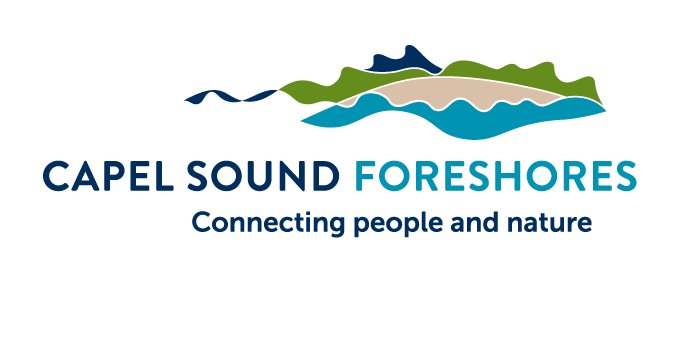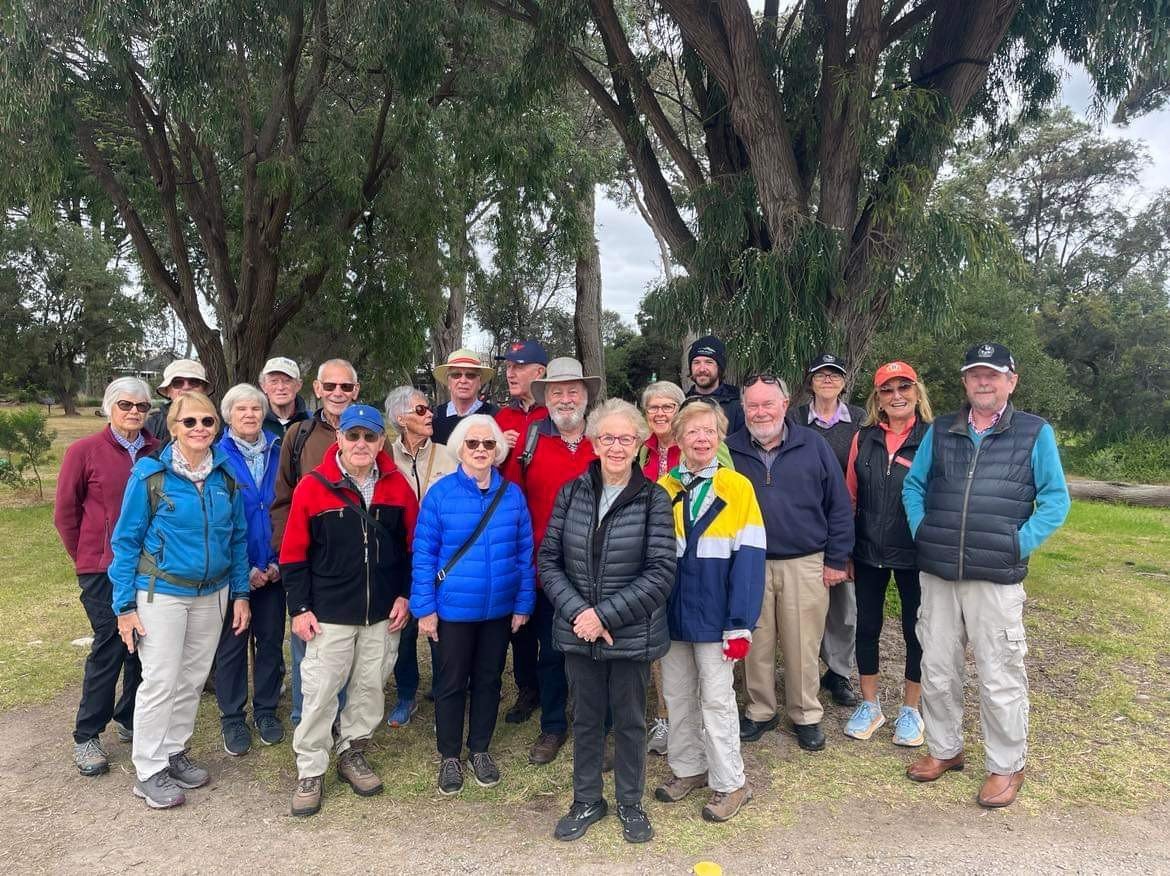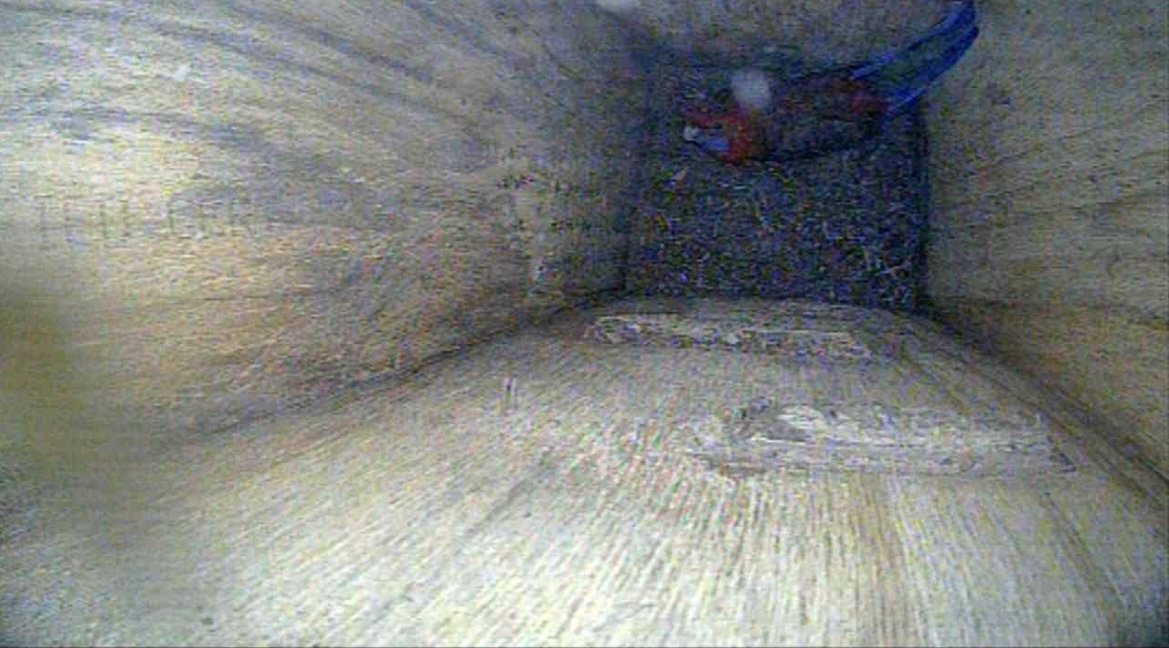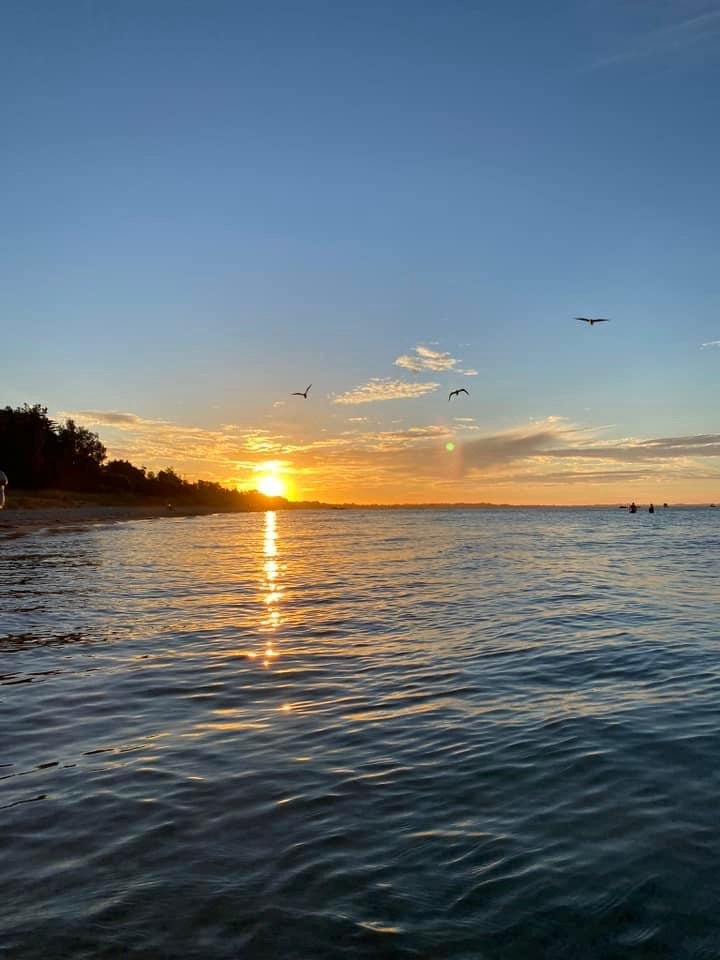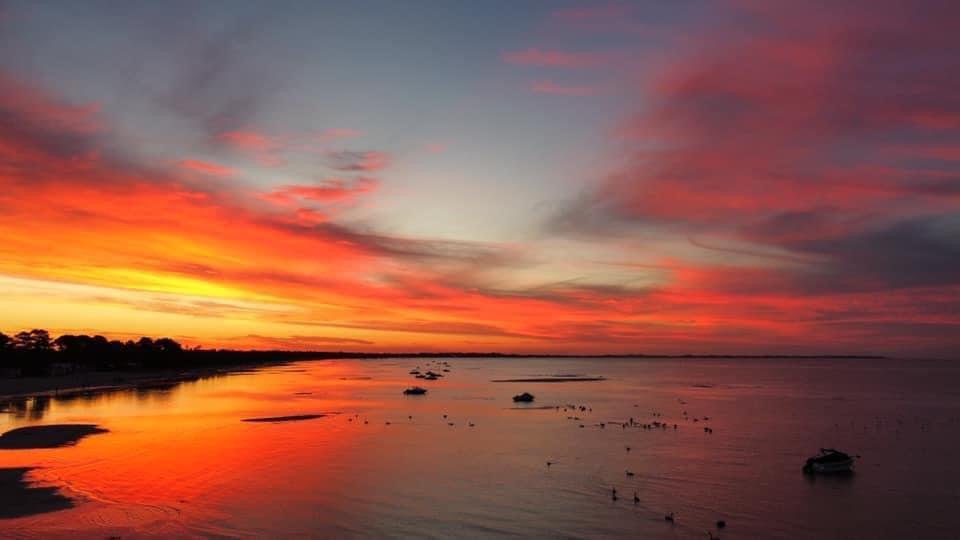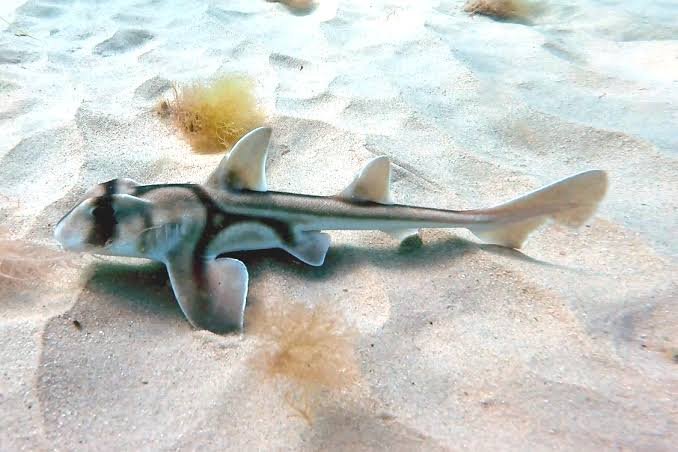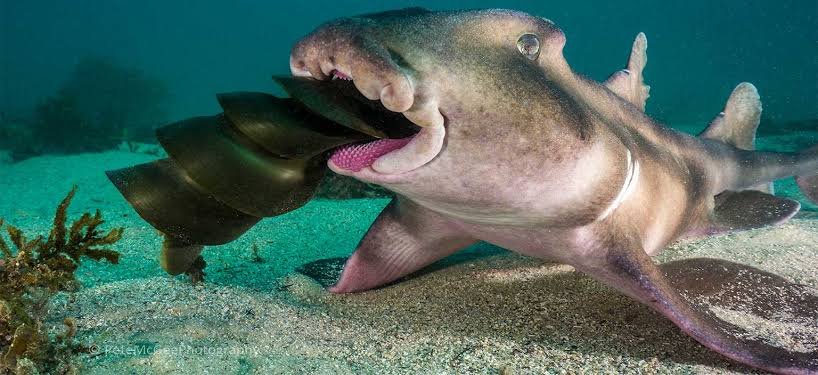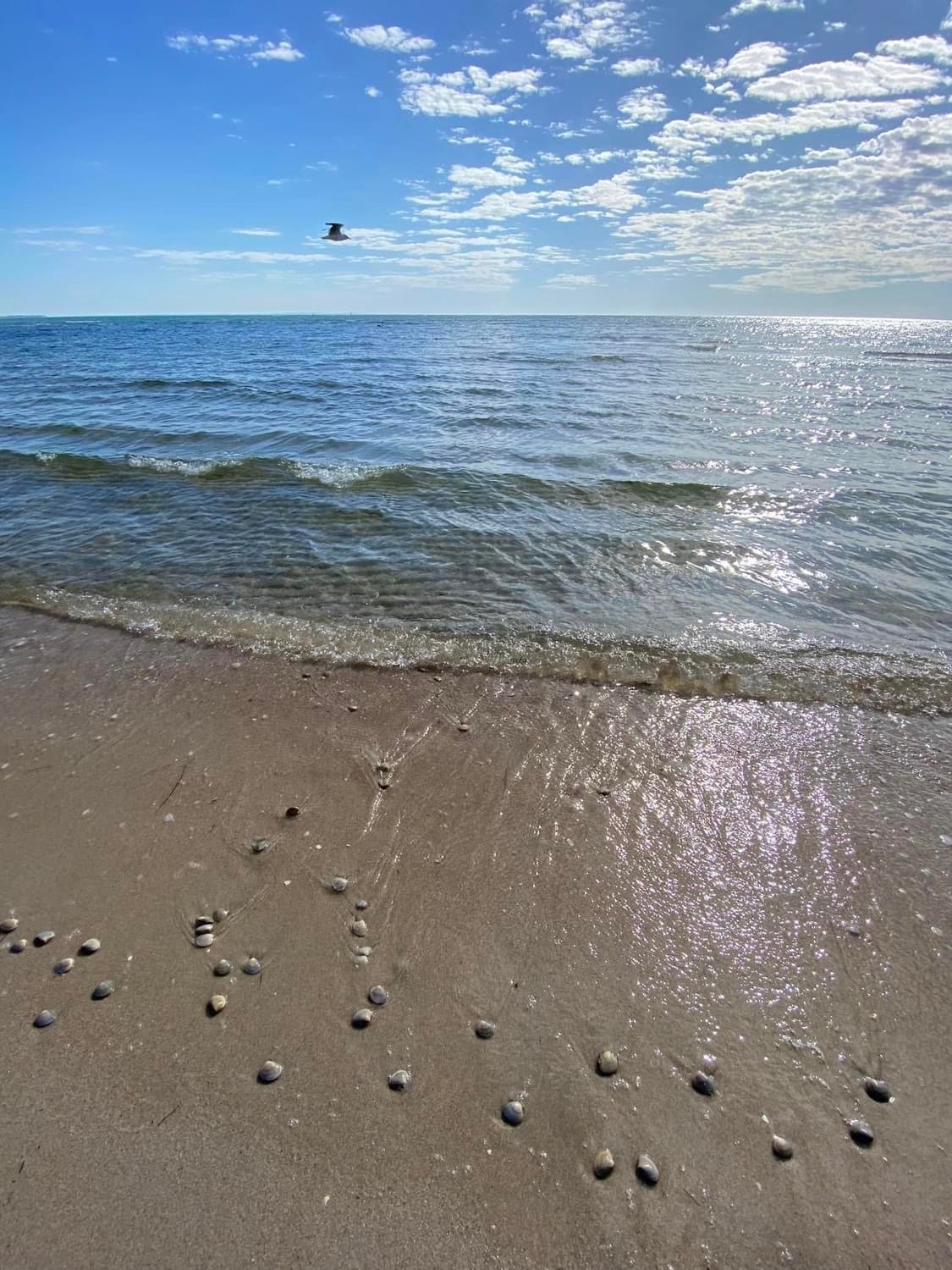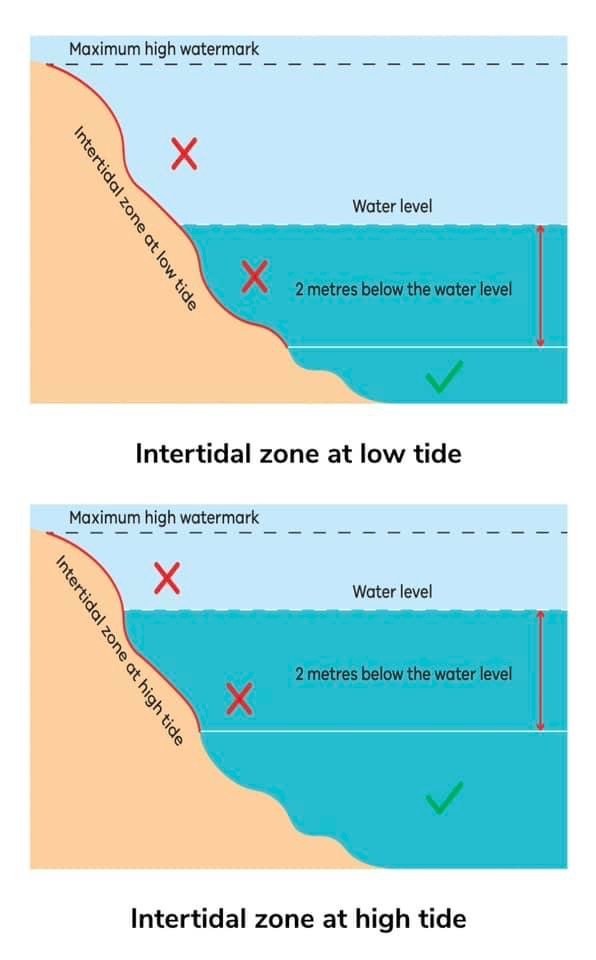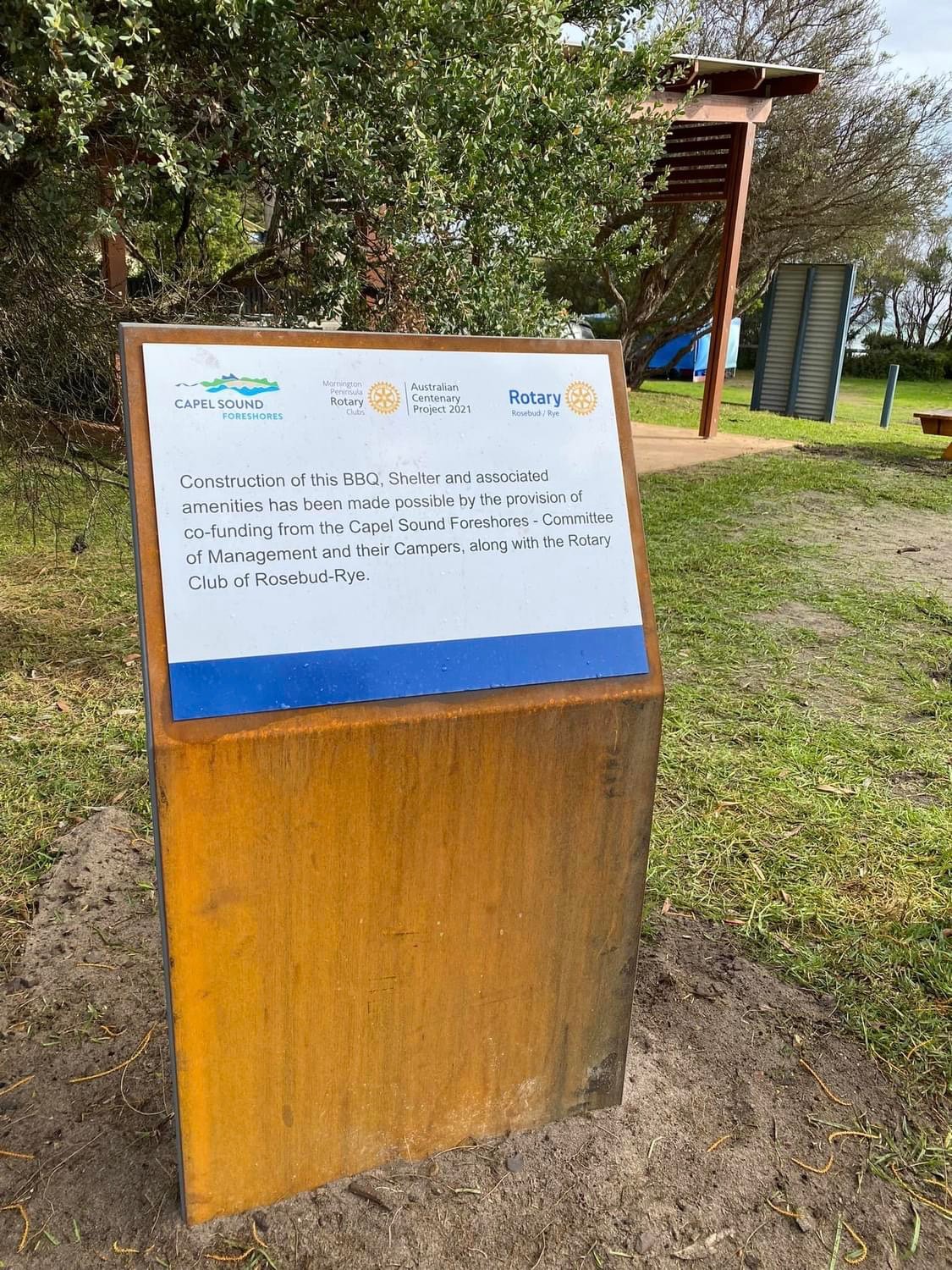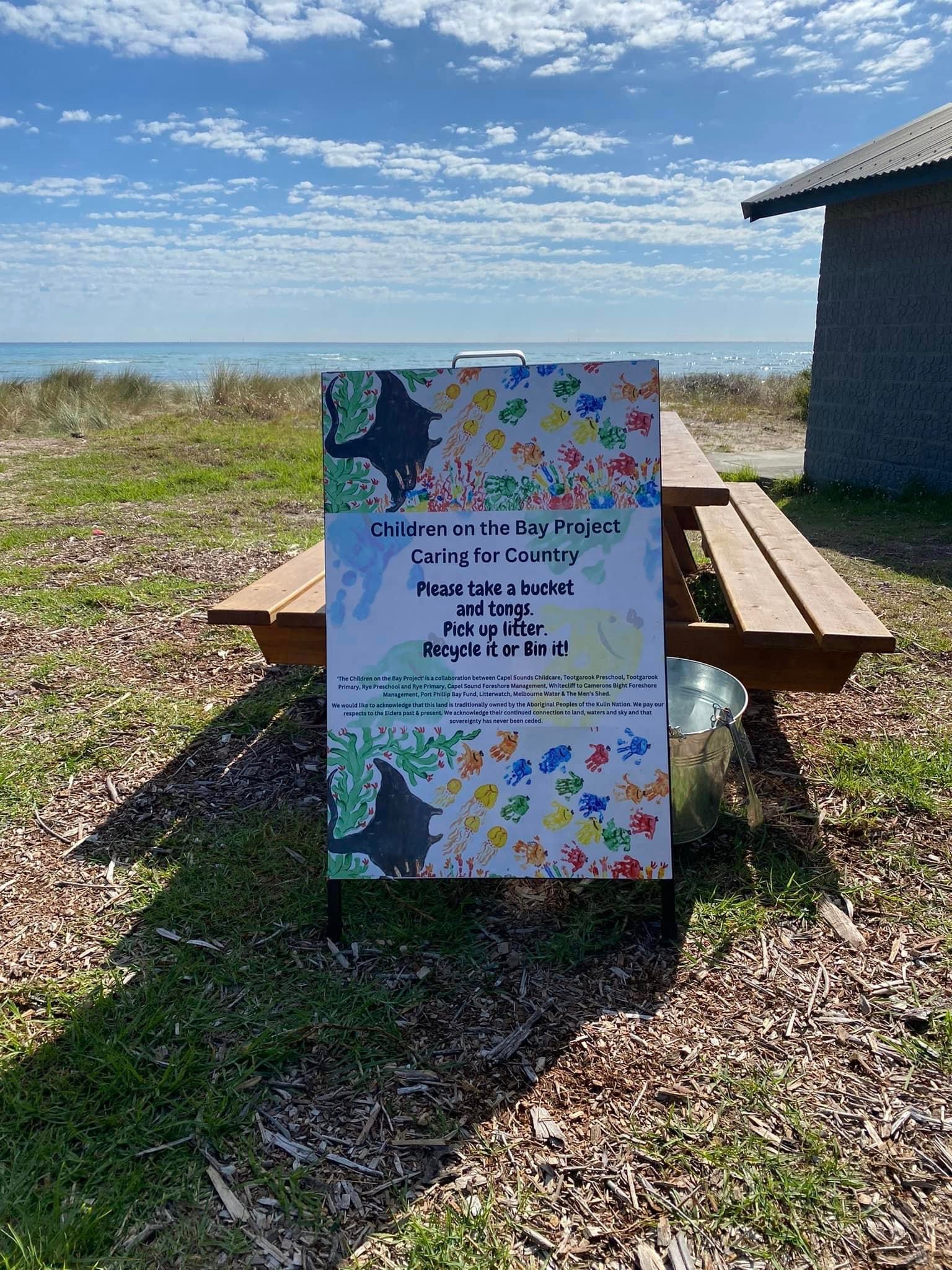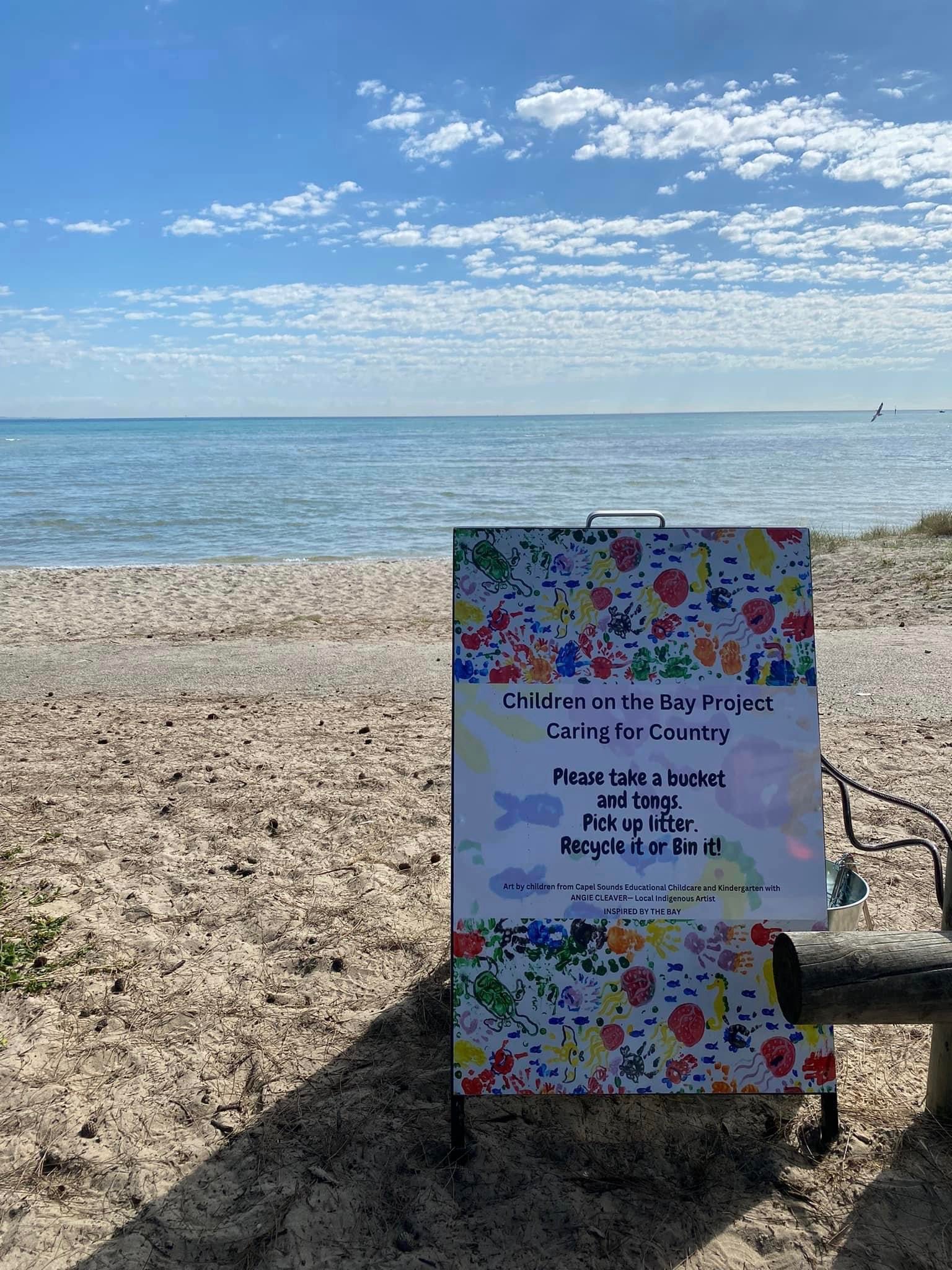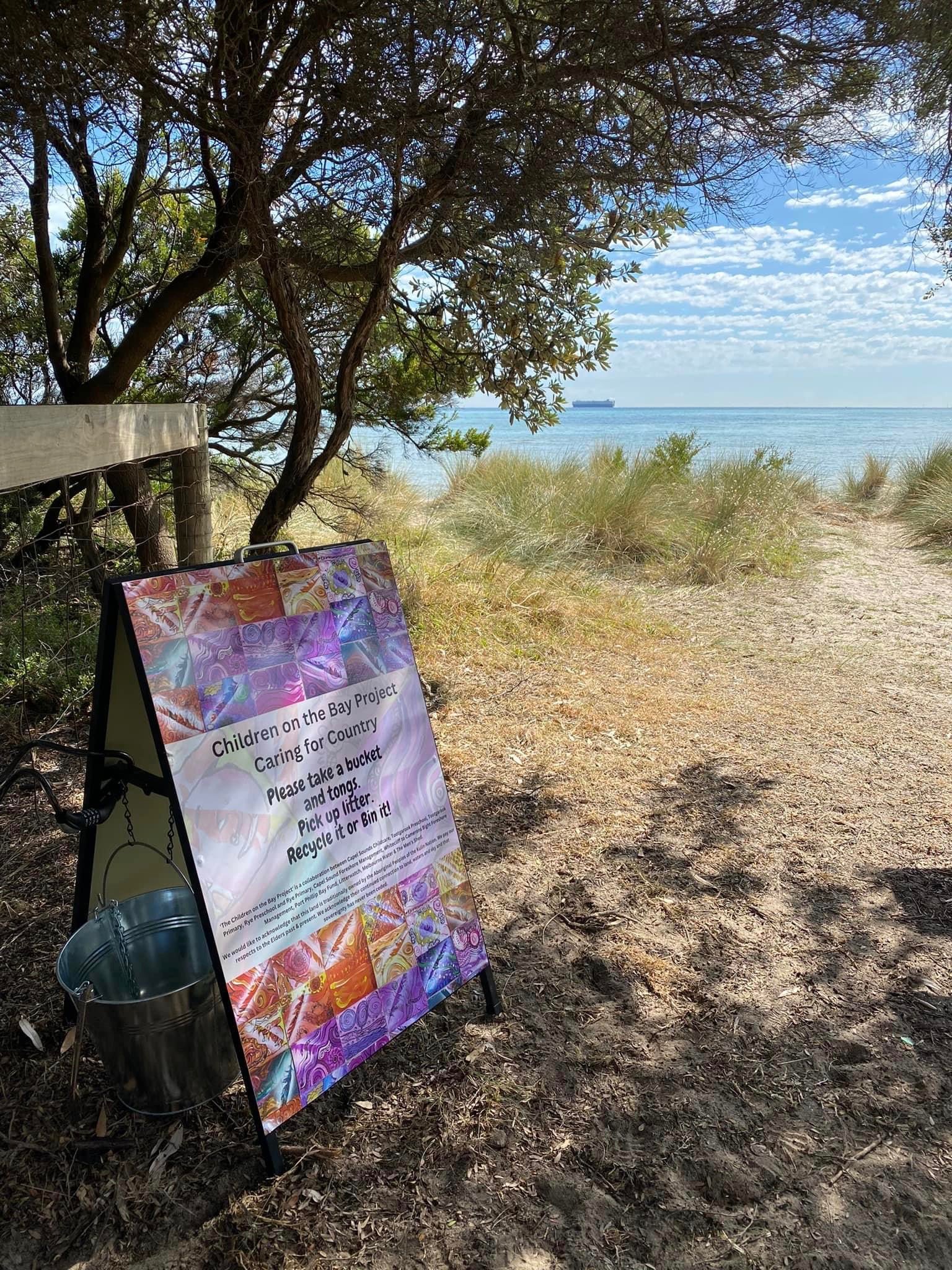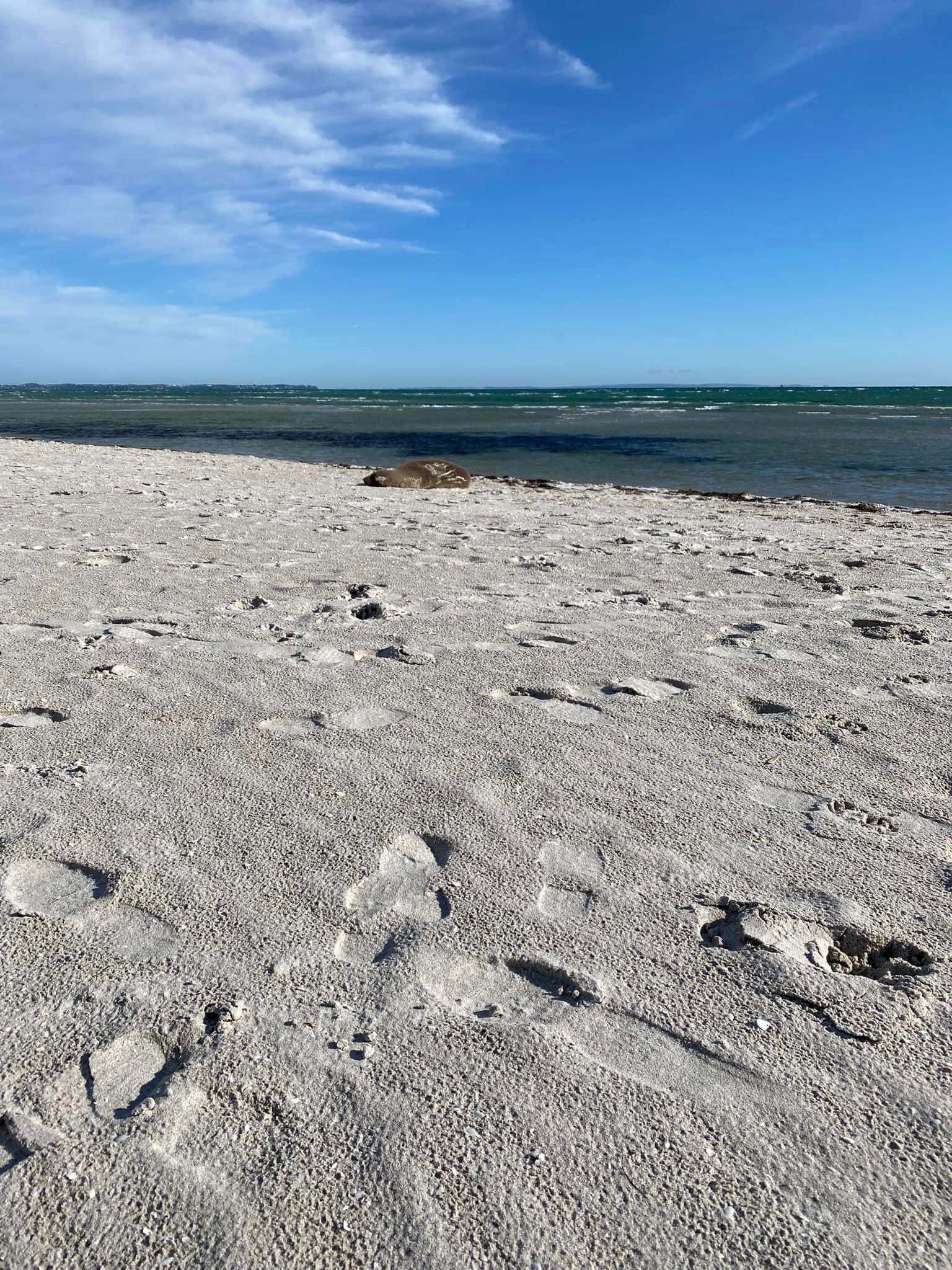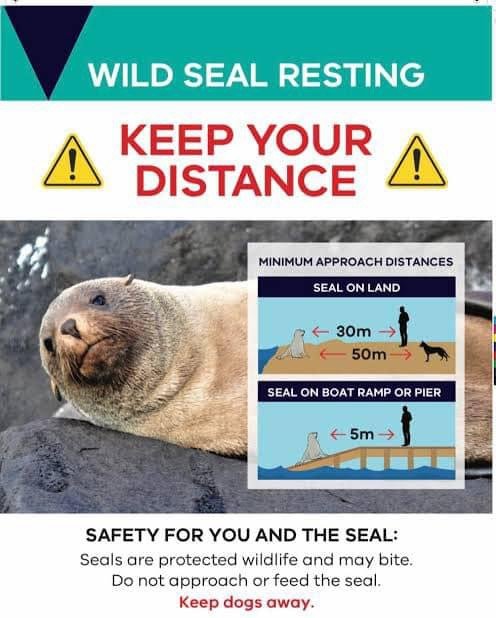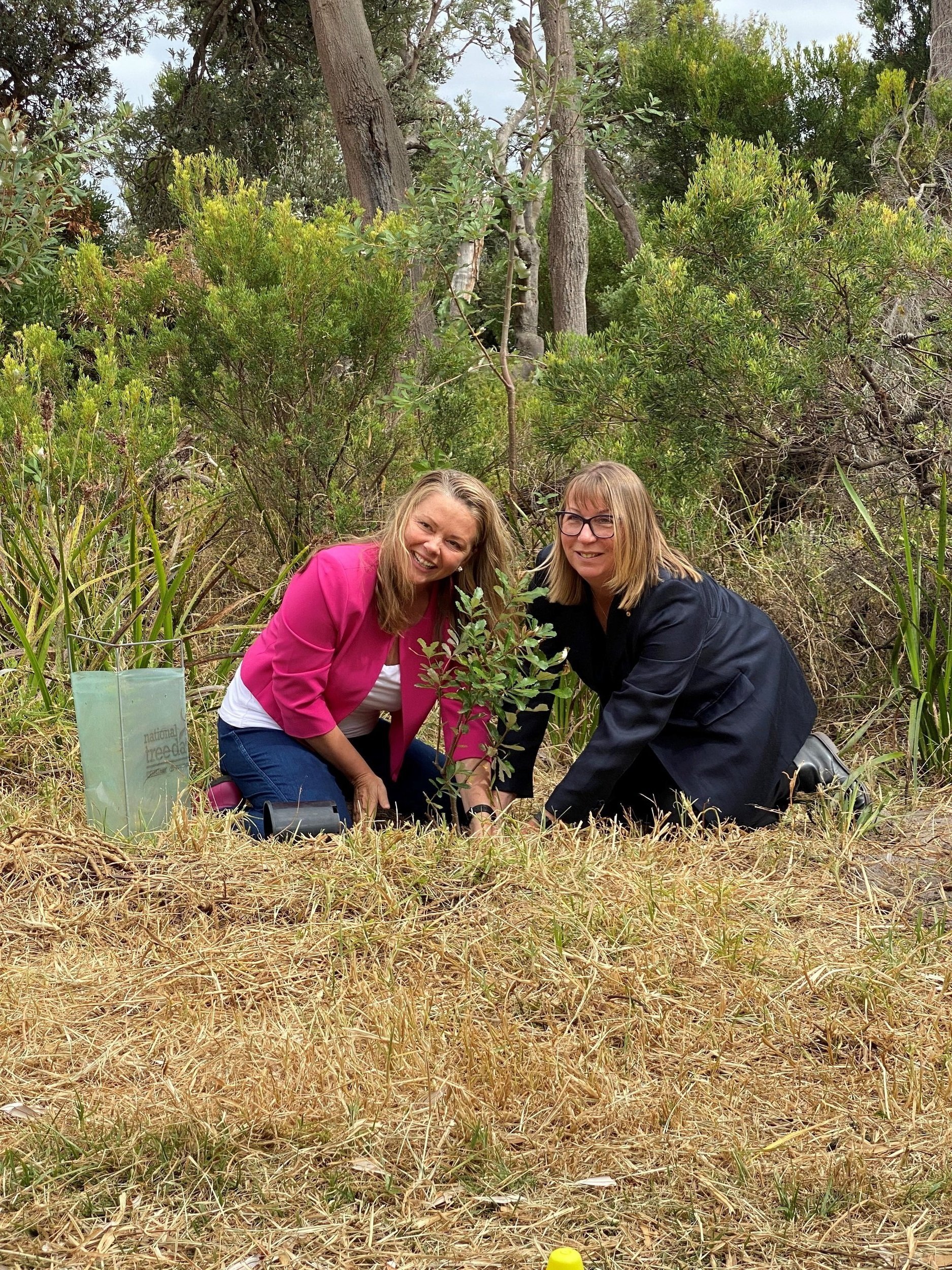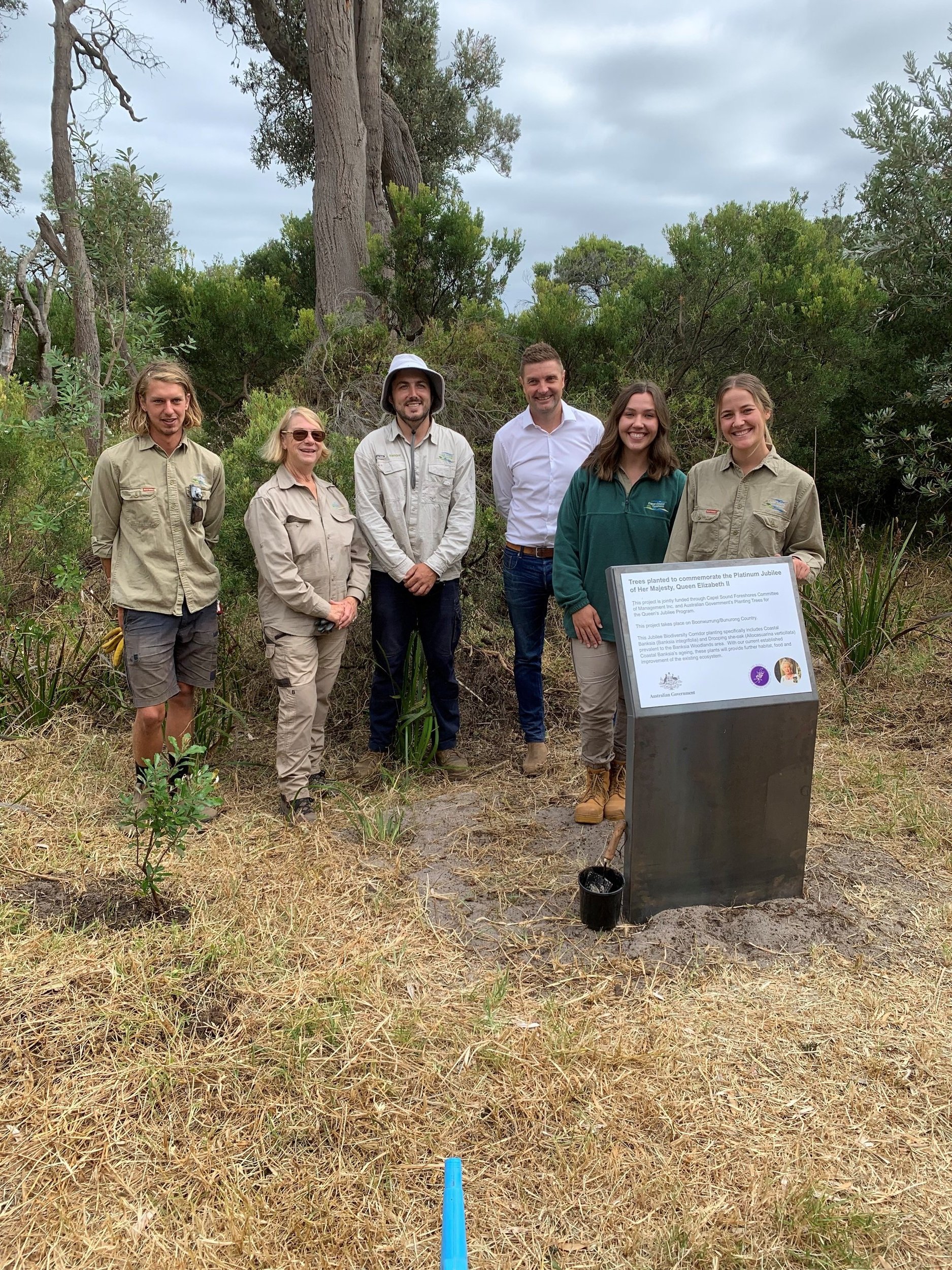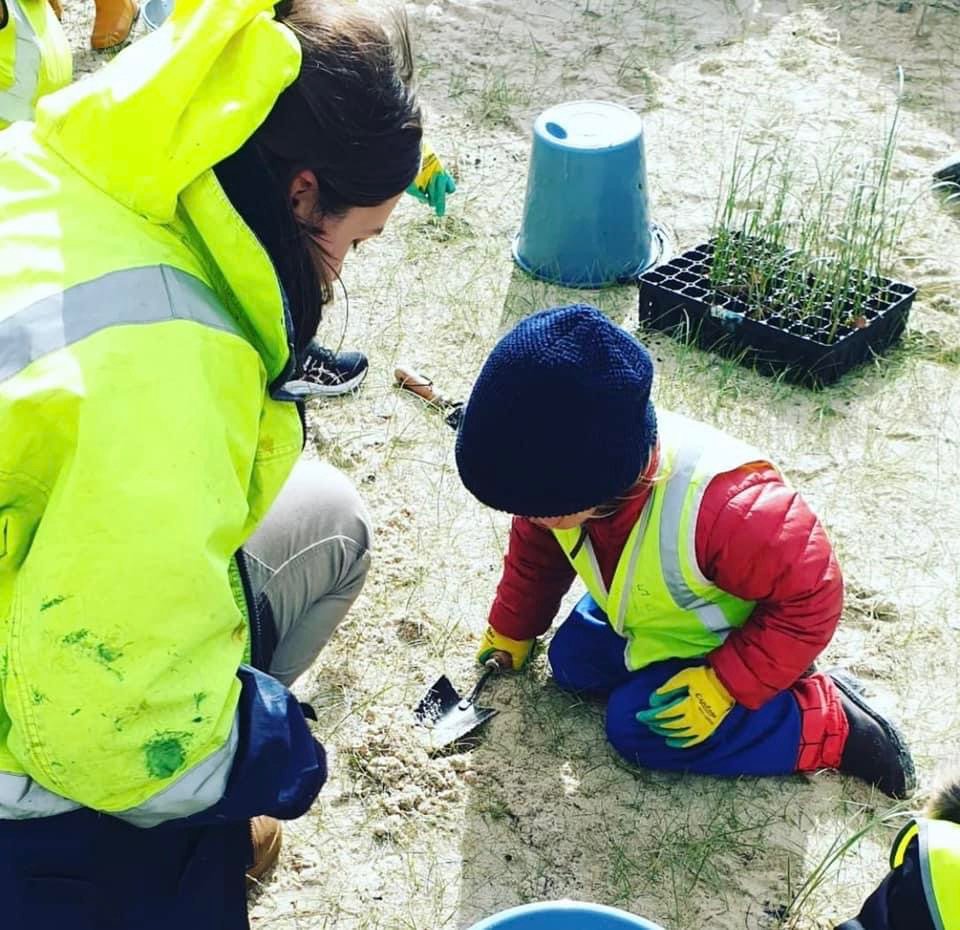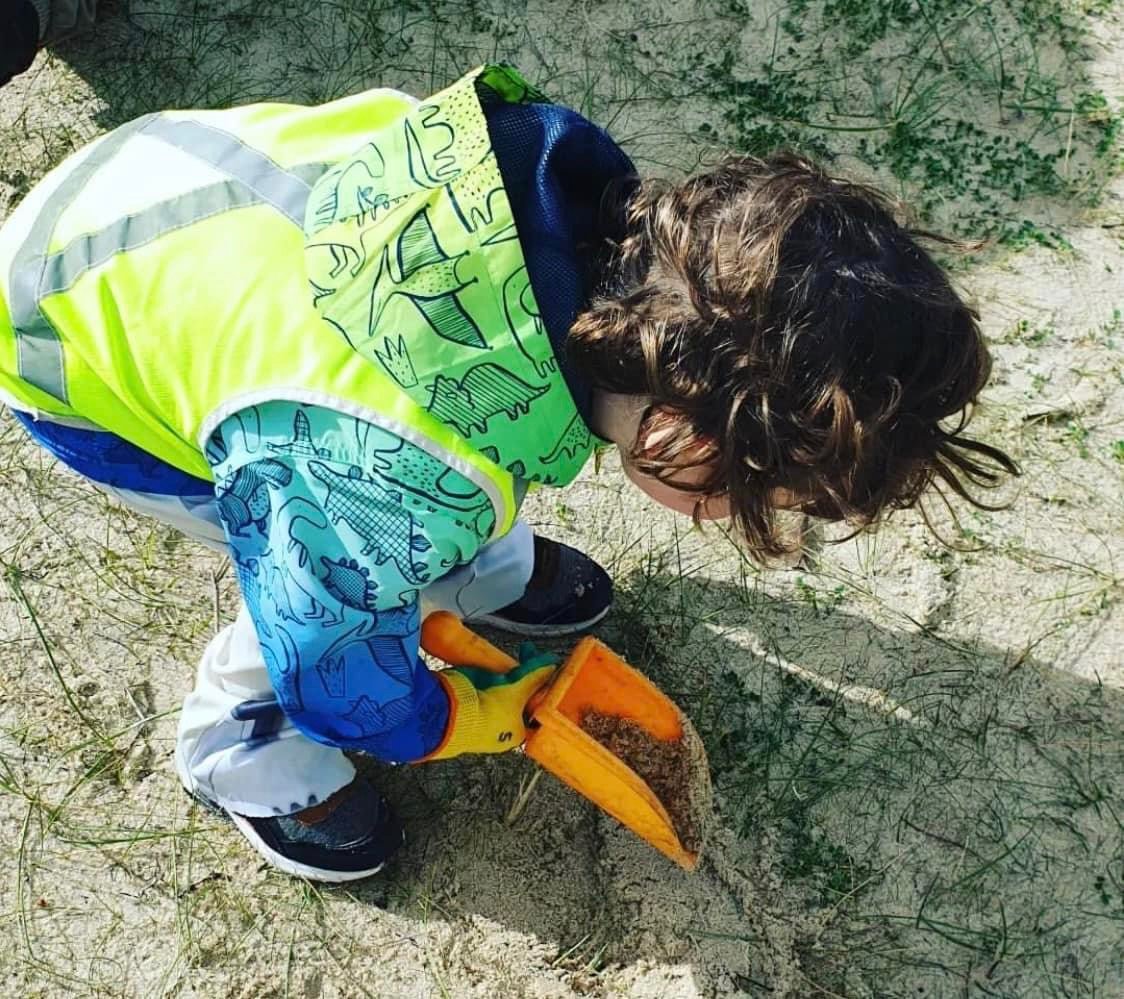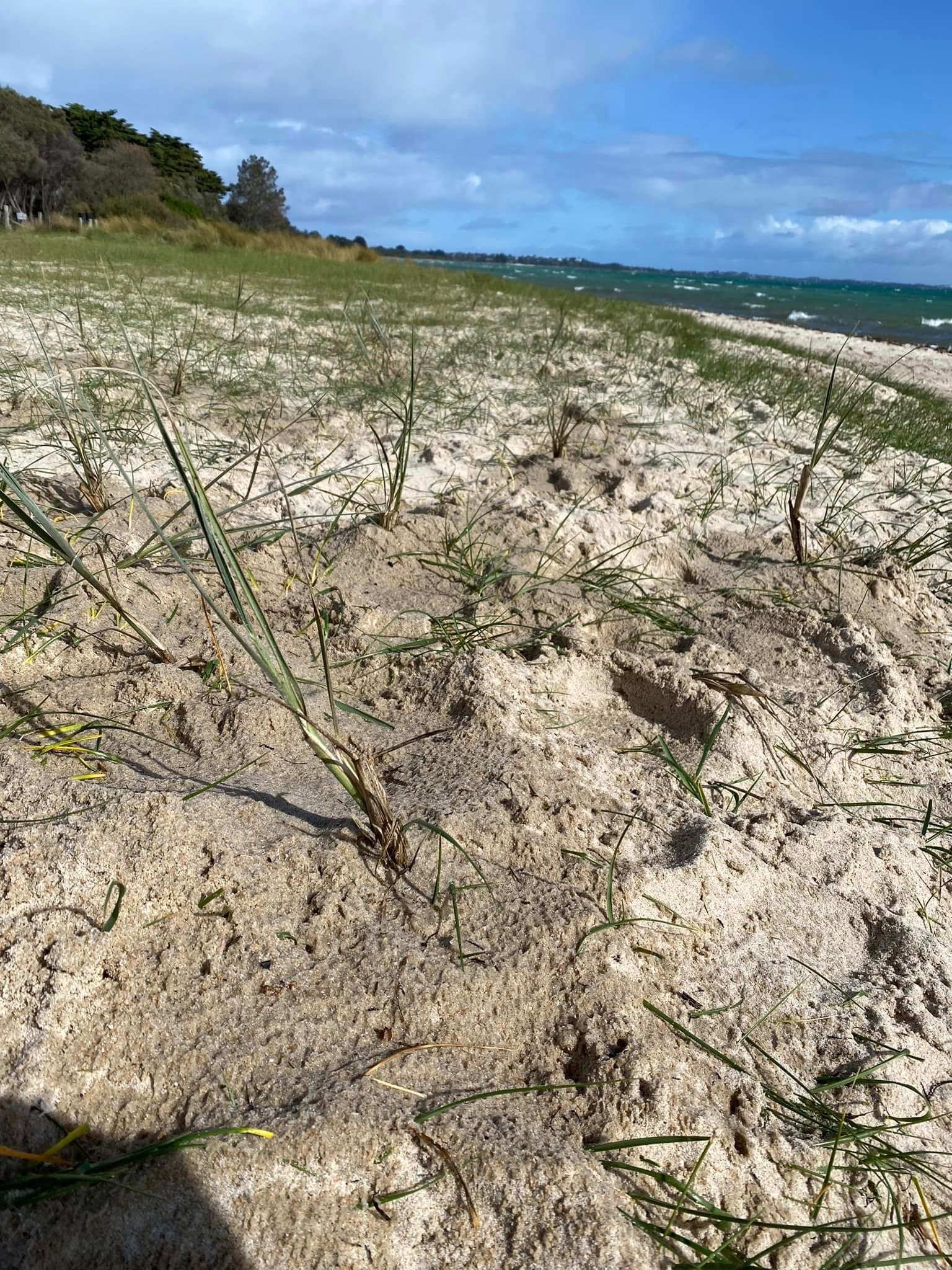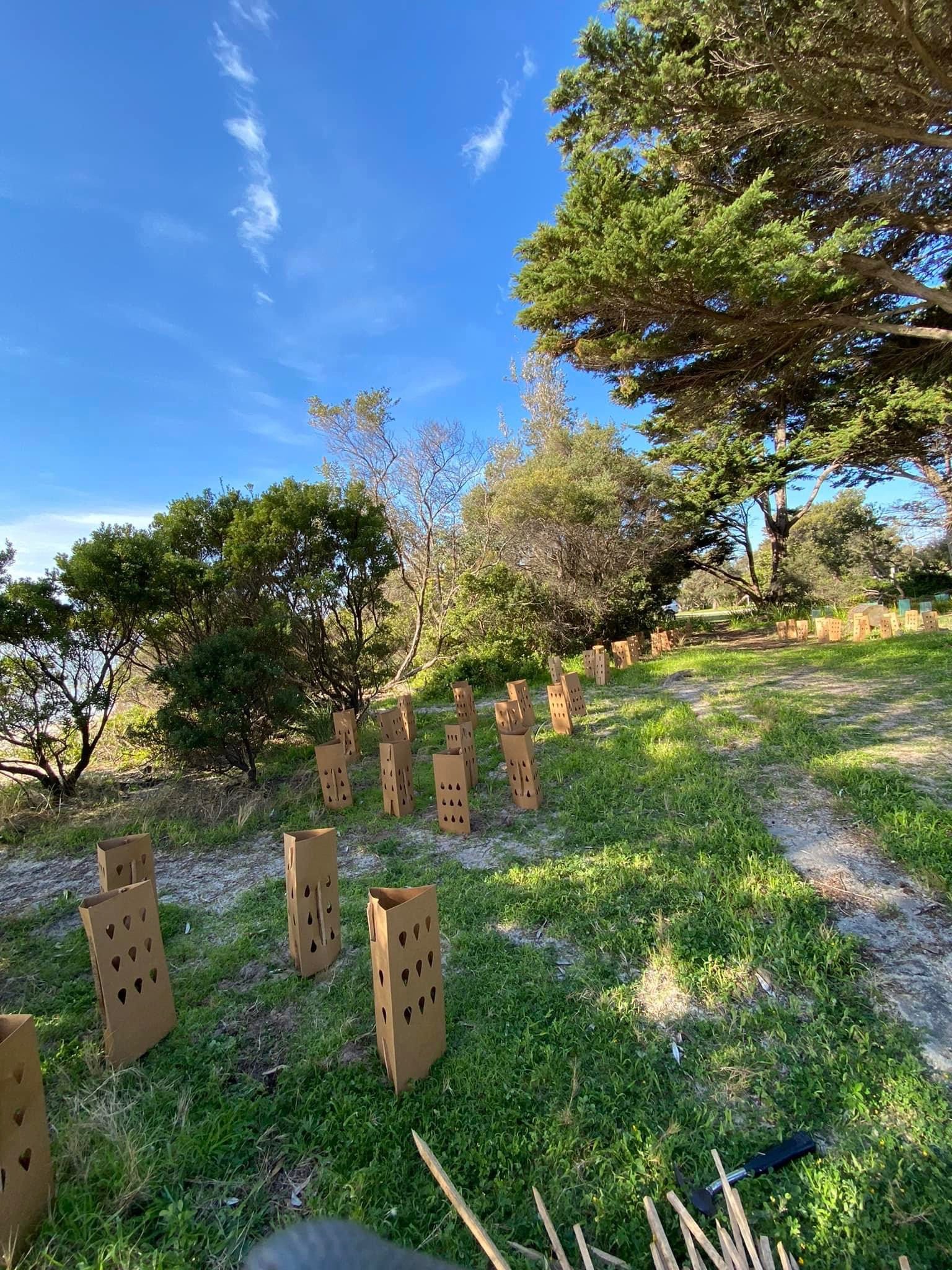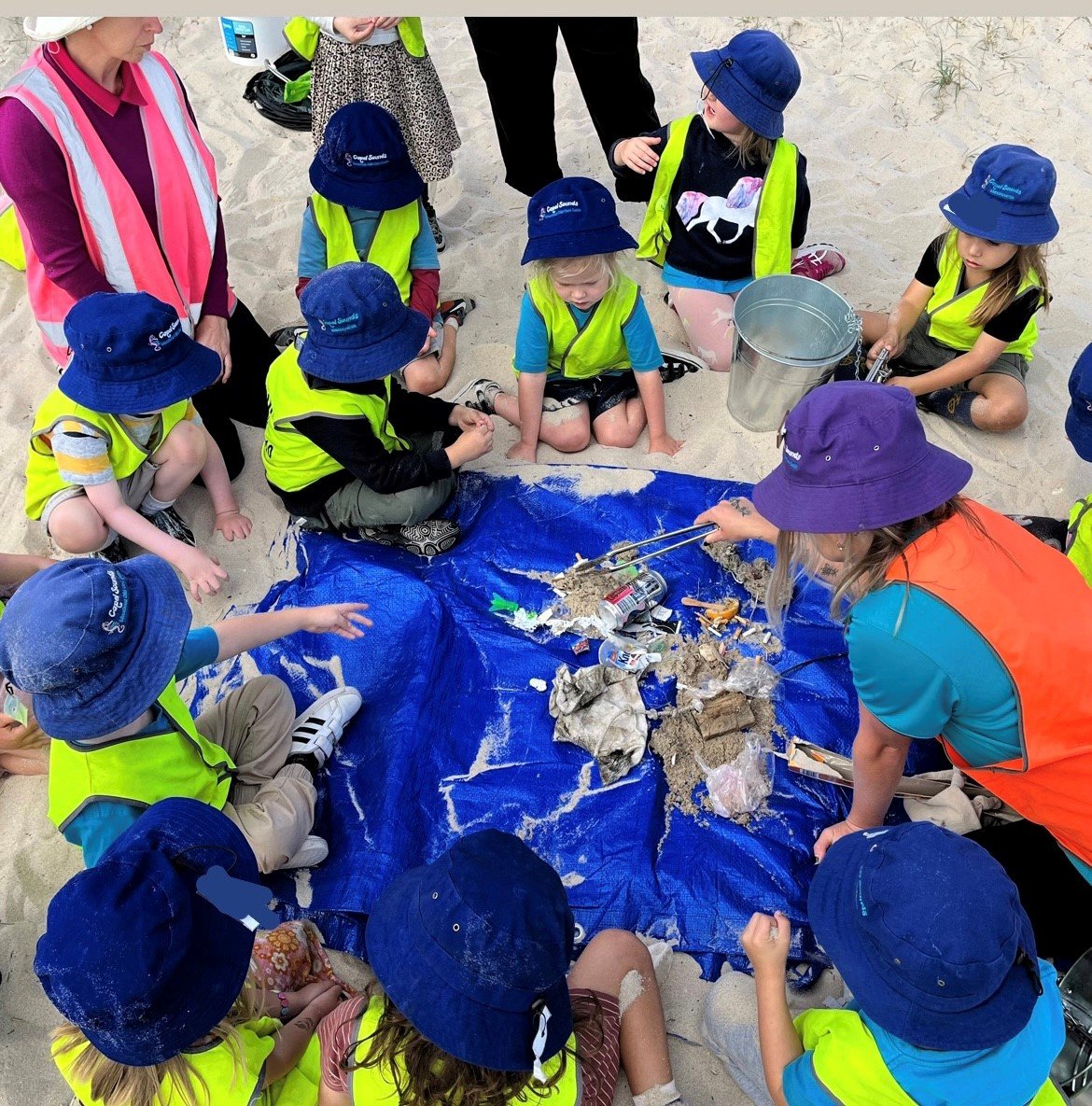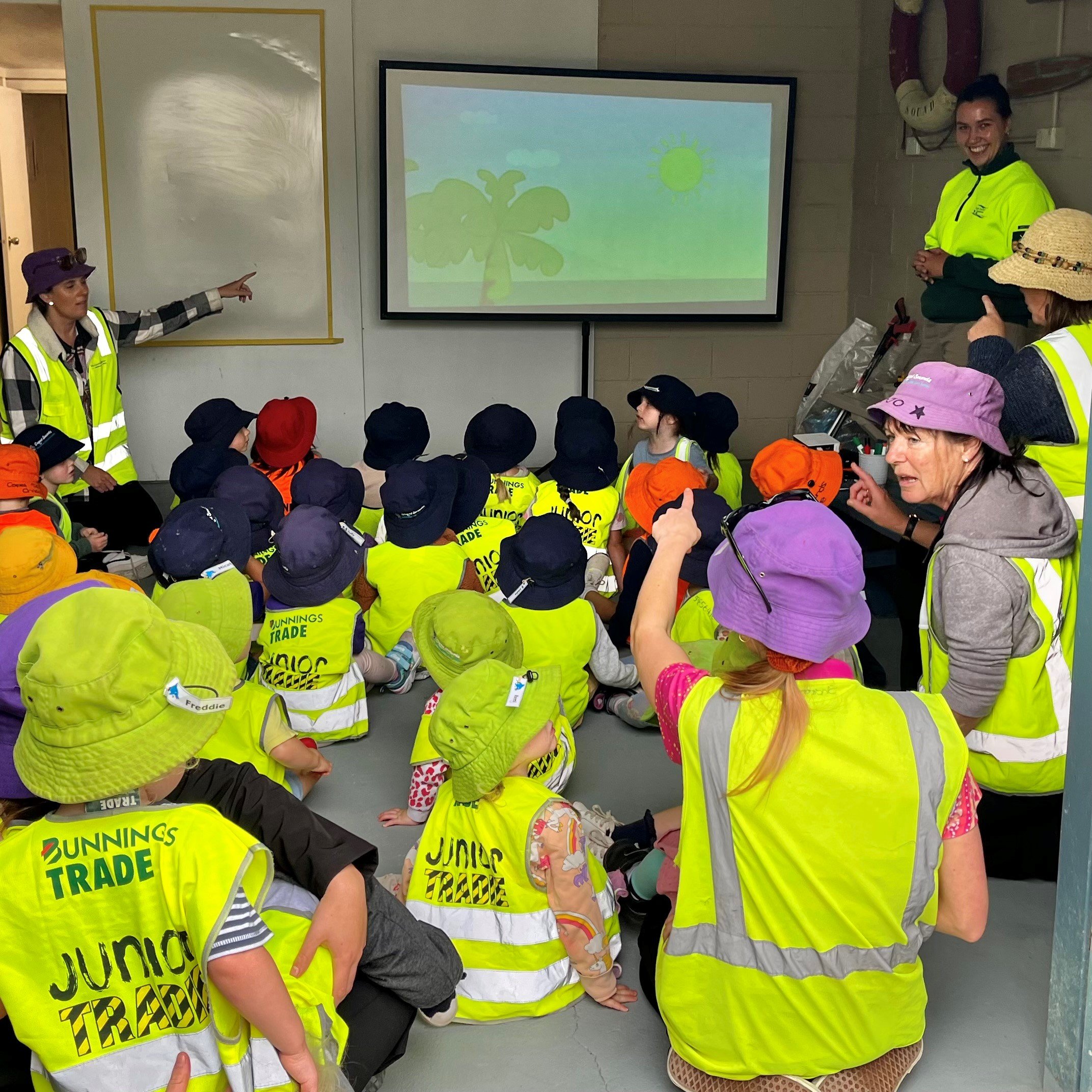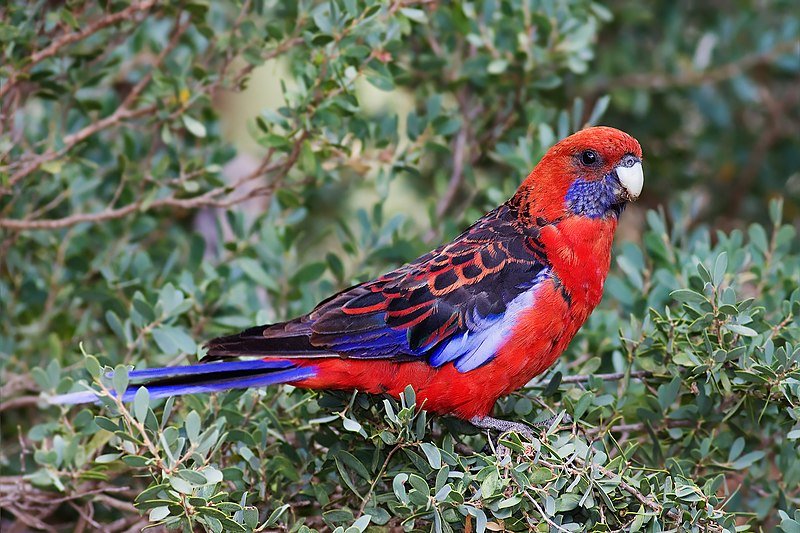Finally Victoria has implemented the ‘Container Deposit Scheme’ and we think our local depot is pretty great! Capel Sound Foreshores is now in the process of providing separate bins that will only collect cans and bottles and all monies earned will be put directly back into enviornmental projects along the Foreshore! How awesome is that?! Do you have plans to be an environmental warrior and savvy saver all in one? Find out more on their website https://www.vic.gov.au/container-deposit-scheme
Earlier this month, Foreshore Rangers Kristy and Brendan were joined by The Old Scotch Bushwalking Club for a Bush ‘Walk and Talk.’
We began our walk at Chinamans Creek, where the Club learned about our significant fauna. This included stories about our Endangered Swamp Skink - Lissolepis coventryi and the incredible migratory journey of our Short-finned Eel - Anguilla australis.
We continued our walk along the Foreshore using specialised camera equipment to peep inside some Nestboxes, where we saw baby Galahs and Crimson Rosellas, too cute!
As the group learned of Capel Sound Foreshore’s 100 indigenous plant species, they tasted some our edible indigenous flora including Bower Spinach - Tetragonia implexicoma and Saltbush - Atriplex cinerea.
All in all, it was a wonderful morning! Big thanks to the Club for joining us and for their kind donation towards purchasing more Nestboxes for our amazing animals!
Did you know that natural tree hollows can take up to 100 years to form?
Due to deforestation and habitat clearing, many of the old growth trees across our country have been removed. As many of our native animals rely on hollows to breed, it is important that we install Nest Boxes to assist them and compensate for a lack of hollows.
At our Tuesday, 19th of September, Friends Group, our Rangers and awesome volunteers carried out the Nest Box monitoring. Using specialised camera equipment, we were able to see inside quickly and effectively, with minimal disturbance to the animals.
Of the 10 boxes surveyed, we were lucky enough to see the following:
1 Ringtail Possum, 1 juvenile Rainbow Lorikeet, 1 Crimson Rosella, 1 Nestbox with 3 Galah eggs inside and 1 with what we believe to be some baby Sugar Gliders! (It was tricky to see among all the Eucalyptus leaves, however you can see some cute little eyes and toes poking out).
We were so excited to see so many of our Nest Boxes being used in the breeding season and that they were all being used by indigenous animals, not pest species. What was extra special, was the high level of biodiversity; in every single box was a different species of mammal or bird!
We had an awesome day, thanks so much to our volunteers!
Which country are you on?
This week is NAIDOC week. NAIDOC stands for National Aboriginals and Islanders Day Observance Committee. This week is an opportunity for all Australians to learn about First Nations cultures, history and achievements of the oldest, continuous living culture on earth.
Click here to explore the ‘Welcome to Country and Acknowledgments Map.’ This map will help show what Country you are on and give you the ability to explore and learn about the deep connection the Traditional Owners have to these lands.
Below is a brief history of Capel Sound Foreshores. This information can be found here in our ‘Flora & Fauna Report 2022 by Malcolm Legg.’
Capel Sound Foreshores reserve falls within the traditional lands of the Aboriginal territory of the Bunurong/Boonwurrong clan of the Kulin Nation. Prior to and post European settlement the site was and is an important area to the Bunurong/Boonwurrong people, with high cultural evidence found throughout the greater area, The Bunurong people may have been the first to make contact with those Europeans who had accompanied Captain David Collins (1756- 1810) in the establishment of the ultimately unsuccessful settlement at Sorrento in 1803.
Early writers observed that animal skins were used as clothing by aboriginal people, possibly because of the climate, and that they built mia-mias for shelter and had a number of semipermanent camp sites. Some of these were known to have been near Arthur’s Seat, on Portsea Downs Estate, Portsea and close to the intersection of the Flinders and Cape Schanck Roads, Flinders. As a consequence of contact with Europeans, infectious diseases were primarily responsible for the disappearance of aboriginal people from the region and by 1856, few if any members of the Bunurong people remained on the Mornington Peninsula.
From the mid-1800s the Mornington Peninsula was cleared of its indigenous vegetation from the ridges down to the coast and pastures were created throughout. More recently indigenous vegetation has returned to 18% and weeds have colonized at most sites.
Post clearing and the introduction of cats and foxes, soon led to the demise and extinction of many fauna species across the Nepean and Mornington Peninsulas such as Long-nosed Potaroo, New Holland Mouse, Dingo etc. Recent fauna extinctions within the foreshore reserve and surrounding areas have and are still occurring and include some of the following: White-footed Dunnart, Eastern Pygmy Possum, Feathertail Glider, etc.
Have you come across these walking along the beach recently? They are the egg casings from a Port Jackson Shark.
The Port Jackson Shark has a distinctive blunt head with a spine in front of both dorsal fins. They have harness-like markings which makes them very easy to be identified. Port Jackson Sharks usually live in rocky environments on, or near, the bottom. Sometimes they are found in muddy and sandy areas, or where seagrass occurs.
Dietary items include sea urchins, molluscs, crustaceans and fishes. Port Jackson Sharks forage for food at night when their prey are most active. They often use caves and rocky outcrops as protection during the day.
The breeding season is usually late winter and into spring. Port Jackson Sharks are oviparous, which means that the female lays eggs. The egg case is a tough, dark brown spiral about 7 cm to 8 cm wide and 15 cm long. It is common to see them washed up on beaches.
The egg case is soft when laid by the female. She uses her mouth to wedge the egg case into a rock crevice where it hardens, and from which one young shark emerges after ten to twelve months. When they hatch, juvenile Port Jackson Sharks, called pups, are about 25 cm long.
Female Port Jackson Sharks mature at 11 to 14 years of age, whereas males only take around 8 to 10 years.
Keep an eye out when walking along Capel Sound Foreshores beaches!
Port Philip Bay’s intertidal zones are protected areas. The intertidal zone is defined as the area starting at the maximum high water mark to a point where the water is 2m deep at any time.
All animals and plants that live in their intertidal zone are critical parts of the food chain. Removal of invertebrates (animals without backbones such as crabs, snails, shell fish and sea urchins) from this zone may seem harmless, but it represents a loss of food for other species.
These invertebrates are protected in the intertidal zone and MUST NOT BE COLLECTED. Penalties apply.
You can help! Report illegal fishing activity by calling 13 3474 (13 FISH).
We have recently partnered with Snap Send Solve to participate in their Waterways and Beaches campaign. By doing so, we are raising awareness to educate the community of the dangers of dumping rubbish around waterways and beaches, and urging the community to report dangerous and/or bulky rubbish with Snap Send Solve.
According to Clean Up Australia, 46% of reported rubbish nationally was found in our waterways (beaches, rivers, creeks). Unsafe water can pose a threat to wildlife, so that’s why were partnering with Snap Send Solve to take action and spread the word to keep these area clean.
Snap Send Solve is a free app which has simplified how you can report community issues such as abandoned or lost trolleys, large or dangerous rubbish, and many other local problems today. It is fast and convenient to report on the go. It will report to the correct authority automatically and send accurate reports including geolocation and images.
Don’t risk hurting yourself by cleaning up heavy, sharp, or potentially toxic rubbish. Instead you can Snap Send Solve it, working together to make Capel Sound Foreshores a pristine environment for everyone to safely enjoy.
Download the free Snap Send Solve app app today via the link below.





The Rotary Club of Rosebud-Rye and the Capel Sound Foreshores Committee have joined forces to create a new local facility for local residents and visitors to enjoy.
The new BBQ shelter, located on Capel Sound Foreshores reserve near the Tootgarook boat ramp (opposite Carmichael Street), was built with funding shared 50/50 from Rotary and the Capel Sound Foreshores Committee, with the aim of enabling more people to enjoy the beautiful surroundings, and, if needed, a cooking facility for local residents who may be living tough.
The new shelter, a rest stop alongside the bike path, adds another ‘piece of the puzzle’ to the Peninsula Bay Trail, a major project shared by Rotary Clubs across the Peninsula with the Mornington Peninsula Shire. It is part of the Rotary’s celebration of its centenary in Australia
Capel Sound Foreshores has had a privilege in working amongst the ‘Children on the Bay Project’ in collaboration with many local school groups engaging in educational talks surrounding Micro-plastics, beach litter clean ups and plantings of native vegetation along Capel Sound Foreshores.
This project’s aim is to increase awareness and educate children about the effects of waste along the bay and to help decrease the amount of rubbish. You may have noticed a few of these great frames placed along Capel Sound Foreshores recently. If not, have a look at:
- Opposite Rose Street
- Trueman’s Road Carpark
- Just past Carmichael Street
- Leonard Street
Please take a bucket and tongs,
Pick up litter,
Recycle it or bin it!
Last week in Chinaman’s Creek at Capel Sound Foreshores, Rangers watched with amazement as the Short-finned Eels (Anguilla australis) left the creek for the ocean, heading on an incredible journey. The eels remarkably migrate 3,000km up the East coast of Australia, to the warmer waters of the Coral Sea to breed. This is the only spot where all Australian and New Zealand freshwater eels spawn.
They begin their lives in the Coral Sea as tiny, transparent larvae and are carried south by the ocean currents. Along the way they morph into ‘glass eels’, which are the shape of an eel but are still small and transparent. At this stage, they begin migrating into estuaries and creeks spreading along the Victorian coastline where they live out their lives.
They then become darker pigmented eels, as you can see in the video. Males mature at around 8-12 years of age, where as females do so at 10-20 years of age. It is at maturity that the eels begin to migrate to the Coral Sea as the Rangers witnessed. But first, they feed and grow significantly to fuel the long journey.
Their skin takes on a silvery appearance and their digestive system closes down, thus by the time they arrive, they are nearly a skeleton. They spawn and die and their young begin the cycle all over again. Isn’t nature truly amazing!
The most predominant species of fur seal seen in Port Philip Bay is the Australian Fur Seal. They can typically be seen resting on the beaches along the Mornington Peninsula and our very own beach along Capel Sound Foreshores.
Yes, these animals are amazing to look at, but it is important to remember that they are wild animals and can be dangerous if they feel threatened. If you do encounter a seal resting along the beach, you MUST keep a distance of 50m when you are with a dog which MUST be on a lead for both their safety and the seals safety.
What another amazing achievement our working bee’s were! In just under 2 hours, our incredible volunteers from our Friends of Capel Sound Foreshores Group collected rubbish starting from Section A near Chinaman’s Creek and swept their way through the foreshore reserve picking up rubbish.
The most common items collected were:
1. Cigarette’s
2. Cable ties
3. Bottle caps
4. Tea bags
5. Food wrappers
Every piece of rubbish that is collected means one less dangerous item for birds, fish or turtles to swallow. As Capel Sound Foreshores is an environmental reserve, we please ask all visitors to pick up your rubbish to help preserve and care for a cleaner future.
If you would like to be involved in our Friends of Capel Sound Foreshores Group, please click the link below to sign up!
Capel Sound Foreshores was successful in obtaining the ‘She-Oak Replenishment Program’ grant. This project was jointly funded through Capel Sound Foreshores Committee of Management Inc and Australian Government’s Planting Trees for the Queen’s Jubilee Program.
This grant allowed the Friends of Capel Sound Foreshores Group and staff to plant Coastal Banksia’s (Banksia integrifolia) and Drooping she-oak (Allocasuarina verticillata) prevalent to the Banksia Woodlands area. With our current established Coastal Banksia’s ageing, these plants will provide further habitat, food and improvement of the existing ecosystem.
A day celebrated with the community, volunteers, campers, comittee members and special thanks to Zoe McKenzie and Jill Sparkes for their support. It was a day to mark the efforts and contribution to ensuring the health of the Banksia Woodlands continues to grow.
‘Capel Sound Foreshores is a unique coastal environment that encourages people to build strong connections with nature and themselves.’
Capel Sound Foreshores has undergone a rebranding to truly depict who we are. You may have noticed on our website/social media pages our new logo, new brand colours along with new uniforms for the staff. Over the years, Capel Sound Foreshores have had several brand logos. We believe this is the best one yet as it reflects who we are, where we are and what we do.
Our Vision
A commitment to innovative and responsive management that protects and enhances our coast and provides a natural sanctuary to connect our diverse communities to the land, the sea and to the traditional owners of our shared country.
Our Values
Nature is the soul of Capel Sound Foreshores.
Community is the spirit of Capel Sound Foreshores.
Stewardship is the heart of Capel Sound Foreshores.
A great few weeks have been had spending the day with local primary and kindergarten groups along with their families.
It was great to see the kids get hand on planting Spinifex (spinifex sericeus), a native grass along our beaches, along with planting various native vegetation such as Correa (correa alba), Tea-Tree’s (leptospermum), Dianella’s (blue-flax-lily), and much more.
It is a great way for the kids to feel connected to the foreshore as they can come back over the next few years to check on how the plants they planted are growing!
All together, roughly 600-700 plants were planted along Capel Sound Foreshores which is an AMAZING effort. We couldn’t have done it without the help from each local school group, educators and families.
How amazing is it to see that the Sugar Gliders are still prevalent in Capel Sound Foreshores. As our rangers were doing their nest box checks, a clan of four sugar gliders appeared in one of the nesting boxes.
Habitat destruction and fragmentation are a key threat to this species as it results in a decline of available tree hollows in which they nest in. That is why it is so important in what we do here at Capel Sound Foreshores in preserving remnant vegetation and woodlands, revegetation works and the installations of our nesting boxes.
Hopefully we will see even more Sugar Gliders in the future!
After a long wait we have had the pleasure of welcoming back Capel Sound Childcare and Tootgarook Primary School to Capel Sound Foreshores. Through The Children on the Bay: Foreshore Care, Education and Conservation grant, we have had the privilege to help educate and spread awareness around microplastics through informative sessions with our Rangers.
Topics discussed included what is rubbish? What are microplastics? How is the food chain affected by microplastics? And what we can all do to help protect and preserve the environmental health of our beaches from rubbish pollution.
The kids had the opportunity to clean up the beach themselves looking for microplastics and other rubbish, which was a HUGE success. As litter and plastic pollution are increasing challenges, all rubbish collected on the day was uploaded to LitterWatch, which collects data to help understand litter trends and patterns within Victoria.
Beach rubbsih collection
Talk with Ranger Bec
Added below is an informative video about the story of microplastics, which we use for our informative sessions with our Rangers if you too would like to know more.
Capel Sound Foreshore is very excited about the upcoming works commencing in Tootgarook for the beach renourishment program.
Several areas in Tootgarook are experiencing severe coastal erosion due to natural sand loss processes. The Department of Environment, Land, Water and Planning (DELWP) will dredge sand from offshore sand bars adjacent to the beaches and pump it ashore. This will protect the coast, infrastructure and assets, and provide a wide and safe beach for community use.
The beaches will largely remain open for public use while works take place. The area to be renourished is between Laura Street and Kevin Street, Tootgarook.
The beach renourishments will take place very soon when weather permits.
During the works, pedestrian access will be maintained with temporary restrictions to parts of the beach. Please ensure any signage is followed and dogs remain on leads due to large machinery being used.
There may be some minimum audible noise heard during the day only.
SUCCESS! We have five Crimson Rosella chicks in one of our nesting boxes!
Both the mother and father will be caring for them right now. Once they leave the nest they will be dependent upon their parents for a further 35 days.
Fingers crossed all five survive!
Many birds are now searching for and defending nesting sites along our foreshore in readiness for Spring! Have you noticed any squabbles lately?
Tree hollows are not that common and large ones are particularly valuable assets as they can take many decades to form.
Everything from birds and mammals to reptiles, insects and arachnids rely on tree hollows for nesting and refuge!
We're being mindful of keeping as many hollows as possible (providing they're safe to the public), and we've installed nesting boxes to provide additional 'real estate'.
Next time you are in Section A, see if you can spot some! Hint: they look similar to speed cameras (haha)!
Pic source: Shutterstock
